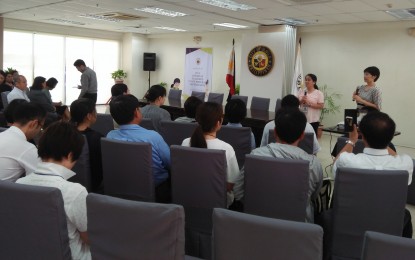
LEARNING DRRM. Teachers from various schools in Tohoku, Japan arrive in Iloilo City to learn about the latter's best practices on disaster risk reduction and management on Wednesday (August 1, 2018). (Photo by Perla Lena)
ILOILO CITY -- Fifteen teachers from various schools in Tohoku, Japan arrived in this city to learn about the best practices of the metropolis in disaster risk reduction and management (DRRM) on Wednesday.
The visit was in line with the Overseas Teacher’s Study Program of the Japan International Cooperation Agency (JICA).
“This year, the teachers from Tohoku area came to the Philippines to study disaster good management and different risk management issues because Tohoku was hit by an earthquake in 2011. They want to exchange experience with Iloilo City because Iloilo City is very prone to flooding,” said Yoshio Wada, JICA Philippines’ chief representative.
Wada said Iloilo City has many community-based programs for the disaster management that teachers from Yohoku could learn.
“If there is a particular use for them, maybe they will use it in Tohoku,” he added.
“We want to have many, many exchange between the teachers, the regions, how to share the experience. To promote such information sharing, experience sharing is our role in JICA,” he added.
One of the delegates Yuriko Sambommatsu from the special support education school of the Kakuda School for Special Needs Education said that Iloilo City and the Tohoku area, where they came from, have many similarities when it comes to disaster challenges.
“We hope to learn not only international understanding but also how Iloilo City adapts disaster risk (and) management,” she said.
Franco Agudo of the Iloilo City Planning and Development office briefed the delegates about the profile of the city.
His presentation showed that Iloilo City is prone to six hazards: flooding, storm surge, earthquake, water scarcity, fire, and soil liquefaction.
He said 25 coastal barangays are prone to storm surge, 27 barangays are affected by water scarcity, 150 are prone to fire, and 179 of the city’s 180 barangays are prone to liquefaction.
Officer-in-charge of the Office of Iloilo City Schools Division Superintendent Clarisa Zamora, meanwhile, explained the role of the Department of Education in times of disaster when schools are used as evacuation centers.
In Iloilo City, schools regularly conduct earthquake drills. All schools also have DRRM coordinators. (PNA)
